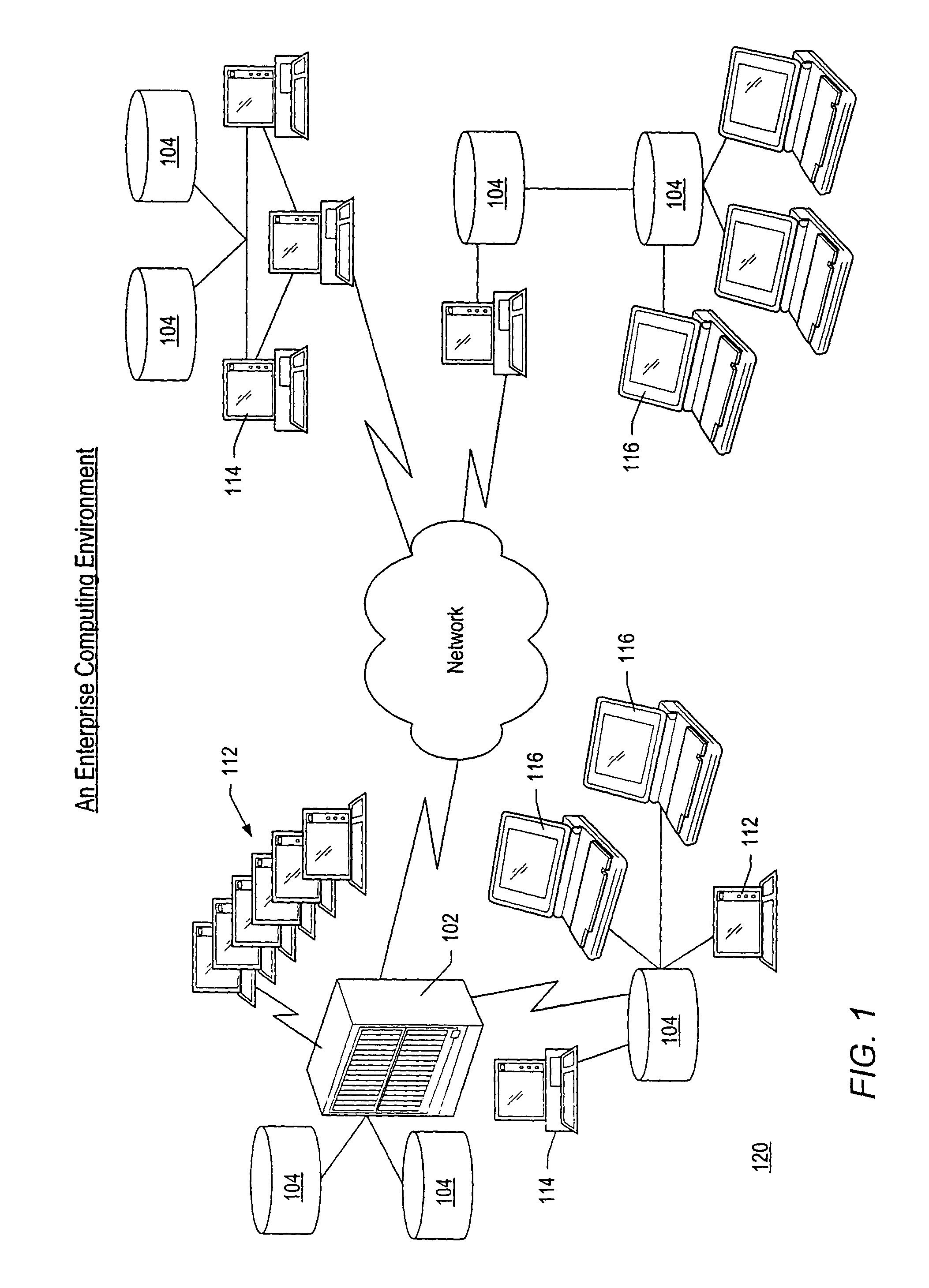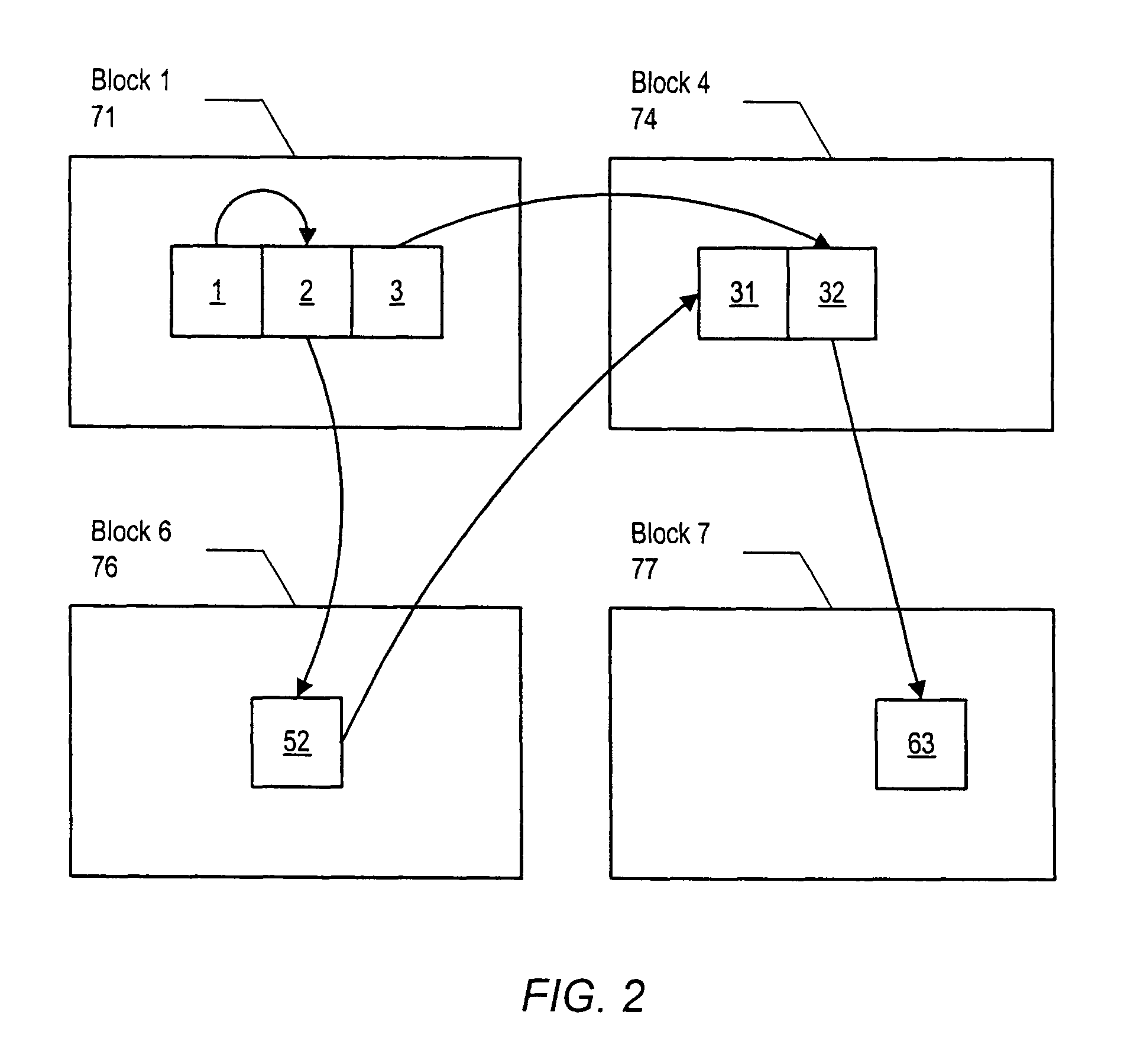Sequential unload processing of IMS databases
a database and sequential technology, applied in the field of computer software, can solve the problems of slow access time and long latencies, unanticipated i/o operations used during a standard unload of an ims database, and low-performing i/o operations
- Summary
- Abstract
- Description
- Claims
- Application Information
AI Technical Summary
Benefits of technology
Problems solved by technology
Method used
Image
Examples
first embodiment
[0037]In the first embodiment, described in more detail in FIG. 9, a lookup table 901 may be created to include a key value and a segment array location. The key value may be used to index into the lookup table 901 to obtain a corresponding segment array location. A segment array 902 may be created to store both the root and child segments from the IMS database 800. These segments may be stored in an indexed order according to a collating sequence of the key values in the lookup table 901, wherein the key value may include a segment type identification number. Additionally, the key value may also include a partition identification number, a data set group identification number, and a relative byte address, as described in FIG. 5a.
second embodiment
[0038]In the second embodiment, described in more detail in FIG. 10, a first segment array 801 may be created to store the root segments from the IMS database 800 in a sequential order. It is not necessary to store the root segments in relative byte address (RBA) order because root segments are accessed in sequential order. A benefit of storing the root segments in sequential order is that no place-holder entries for RBAs not used (e.g., gaps) will exist in the first segment array. Additionally, a second segment array 802 may be created to store the child segments from the IMS database 800 in a relative byte address (RBA) order.
FIG. 4: Sequential Unload Processing of an IMS Database
[0039]FIG. 4 is a flowchart of an embodiment of a system and method for sequential unload processing of an IMS database.
[0040]In step 301 blocks of the IMS database may be read sequentially, block by block, wherein each of the blocks may include zero or more segments. All blocks are preferably read, inclu...
PUM
 Login to View More
Login to View More Abstract
Description
Claims
Application Information
 Login to View More
Login to View More - Generate Ideas
- Intellectual Property
- Life Sciences
- Materials
- Tech Scout
- Unparalleled Data Quality
- Higher Quality Content
- 60% Fewer Hallucinations
Browse by: Latest US Patents, China's latest patents, Technical Efficacy Thesaurus, Application Domain, Technology Topic, Popular Technical Reports.
© 2025 PatSnap. All rights reserved.Legal|Privacy policy|Modern Slavery Act Transparency Statement|Sitemap|About US| Contact US: help@patsnap.com



